14 Best National Parks To Plan Trips To Now Before Anyone Else Does

Think you’ve seen the best of America’s national parks? Think again. Beyond the famous names like Yellowstone and the Grand Canyon lie wild, untouched gems that few travelers ever reach.
These underrated parks offer raw beauty, peaceful trails, and the kind of solitude that turns a hike into a soul-stirring experience. No packed viewpoints, no traffic jams—just you and nature at its purest.
If you’re ready to trade the crowds for quiet wonder, these hidden treasures are calling. Explore them now—before the secret’s out.
1. North Cascades National Park, Washington
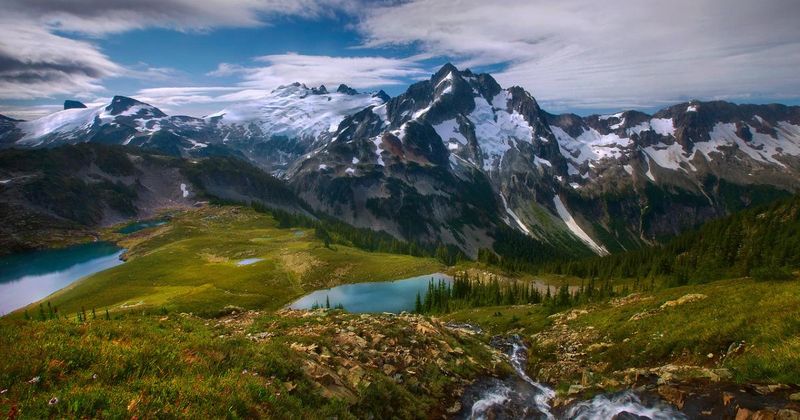
Hidden in Washington’s northern wilderness, this park offers some of America’s most dramatic mountain scenery. Jagged peaks pierce the sky while glacial lakes mirror their snow-capped summits below.
Over 400 miles of trails wind through old-growth forests and alpine meadows bursting with wildflowers. The park receives fewer than 30,000 visitors annually, making it perfect for solitude seekers.
Cascade Pass provides stunning panoramic views without requiring technical climbing skills. Pack layers since weather changes quickly at elevation, and bring a camera to capture the pristine wilderness that feels untouched by time.
2. Great Sand Dunes National Park, Colorado
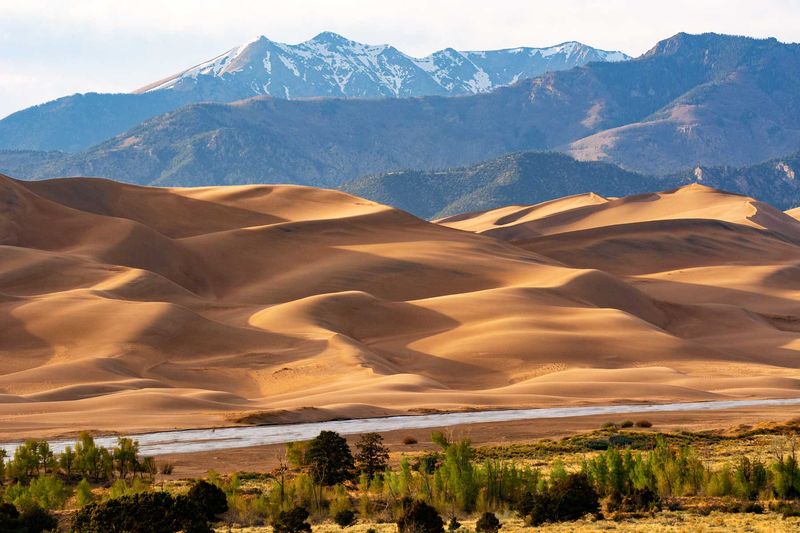
Picture towering sand dunes rising 750 feet against a backdrop of snow-capped mountains. This Colorado wonder creates an otherworldly landscape that feels more like another planet than the American West.
Summer brings warm sand perfect for sandboarding and sand skiing adventures. Medano Creek flows seasonally at the dune’s base, creating a natural beach experience in the desert.
Star gazing here ranks among the best in the country due to minimal light pollution. The park’s unique ecosystem supports diverse wildlife, from elk to Great Sand Dunes tiger beetles found nowhere else on Earth.
3. Isle Royale National Park, Michigan

Accessible only by boat or seaplane, this remote island wilderness in Lake Superior offers true escape from modern life. No roads, no cars, just pristine wilderness and crystal-clear waters.
The park hosts one of the longest-running wildlife studies in the world, tracking wolves and moose populations. Hiking trails lead to scenic overlooks where you might spot these magnificent creatures in their natural habitat.
Kayaking around the island reveals hidden coves and secluded beaches. The park receives only about 25,000 visitors yearly, ensuring peaceful encounters with nature that feel increasingly rare in our connected world.
4. Congaree National Park, South Carolina

Ancient giants tower overhead in America’s largest intact expanse of old-growth bottomland hardwood forest. Some trees here have stood for over 500 years, creating a cathedral-like canopy.
The park’s elevated boardwalk allows easy exploration through areas that flood seasonally. Spring brings spectacular displays of synchronous fireflies, creating a magical light show few people witness.
Canoeing Cedar Creek reveals the forest from a different perspective as you paddle beneath massive cypress trees. Wildlife includes river otters, bobcats, and over 200 bird species, making every visit a potential wildlife encounter in this South Carolina treasure.
5. Guadalupe Mountains National Park, Texas
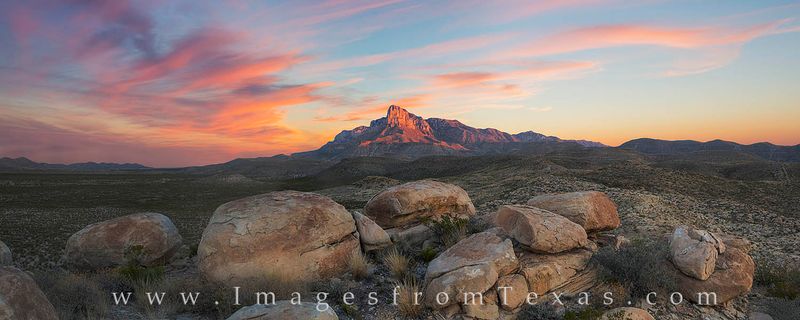
Rising abruptly from the Chihuahuan Desert, these ancient limestone cliffs hold secrets from when this area lay beneath a tropical sea. Fossil-rich rocks tell stories spanning millions of years.
El Capitan, the park’s signature peak, challenges hikers with steep trails leading to breathtaking summit views. Desert springs create oases where wildlife congregates, offering excellent viewing opportunities.
Fall transforms McKittrick Canyon into a riot of color as bigtooth maples display brilliant reds and oranges. The park’s remote location means dark skies perfect for stargazing, where the Milky Way stretches across the horizon in stunning detail.
6. Katmai National Park, Alaska
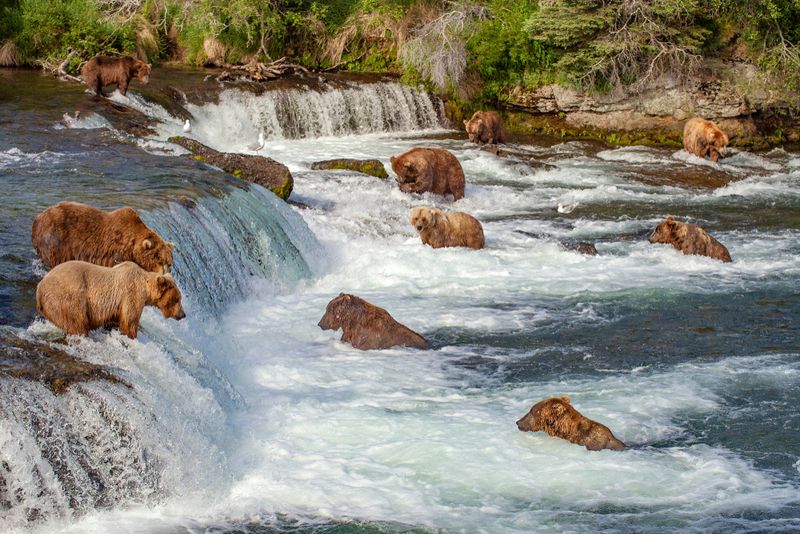
Brooks Falls provides front-row seats to one of nature’s greatest spectacles as massive brown bears congregate to catch salmon. These giants, some weighing over 1,000 pounds, demonstrate incredible fishing skills.
The park protects over 4 million acres of pristine Alaskan wilderness, including active volcanoes and pristine lakes. Valley of Ten Thousand Smokes showcases the aftermath of the 1912 Novarupta eruption.
Accessible primarily by floatplane, the journey itself becomes part of the adventure. Summer offers the best bear viewing opportunities, while fall brings stunning aurora displays dancing across the northern sky in this remote wilderness paradise.
7. Dry Tortugas National Park, Florida

Seventy miles west of Key West lies this remote paradise accessible only by boat or seaplane. Crystal-clear waters surround historic Fort Jefferson, a massive 19th-century fortress on a tiny coral island.
Snorkeling here reveals vibrant coral reefs teeming with tropical fish in some of the clearest waters in North America. The park protects important nesting areas for sea turtles and seabirds.
Camping on the island provides a Robinson Crusoe experience under star-filled skies. During migration seasons, the fortress serves as a crucial stopover for countless bird species, creating spectacular viewing opportunities for nature enthusiasts willing to make the journey.
8. Black Canyon of the Gunnison National Park, Colorado

Carved by the Gunnison River over two million years, this narrow canyon plunges 2,700 feet into shadowy depths. Dark metamorphic rock walls create dramatic contrasts with the bright Colorado sky above.
The canyon’s name comes from limited sunlight reaching the bottom, creating an otherworldly atmosphere. South Rim Drive offers spectacular overlooks without requiring strenuous hiking.
Rock climbing here attracts adventurous souls seeking vertical challenges on some of Colorado’s most dramatic cliff faces. Warner Point Trail provides accessible hiking with panoramic views, while the canyon’s unique acoustics create echoes that seem to come from another world entirely.
9. Pinnacles National Park, California
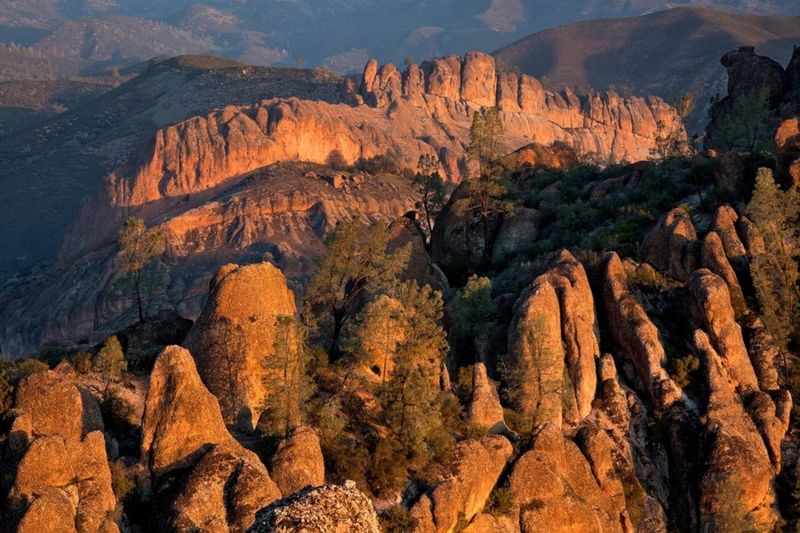
Ancient volcanic eruptions created this landscape of towering rock spires and mysterious caves. The park’s unique geology provides habitat for the endangered California condor, North America’s largest bird.
Balconies Cave offers underground adventure through narrow passages and cathedral-like chambers. Spring wildflower blooms transform the chaparral landscape into a colorful tapestry of poppies and lupines.
Rock climbing routes challenge enthusiasts on volcanic breccia formations found nowhere else. The park’s location in central California means mild weather year-round, perfect for hiking trails that wind through otherworldly landscapes where massive condors soar overhead on thermals rising from sun-warmed rocks.
10. Voyageurs National Park, Minnesota
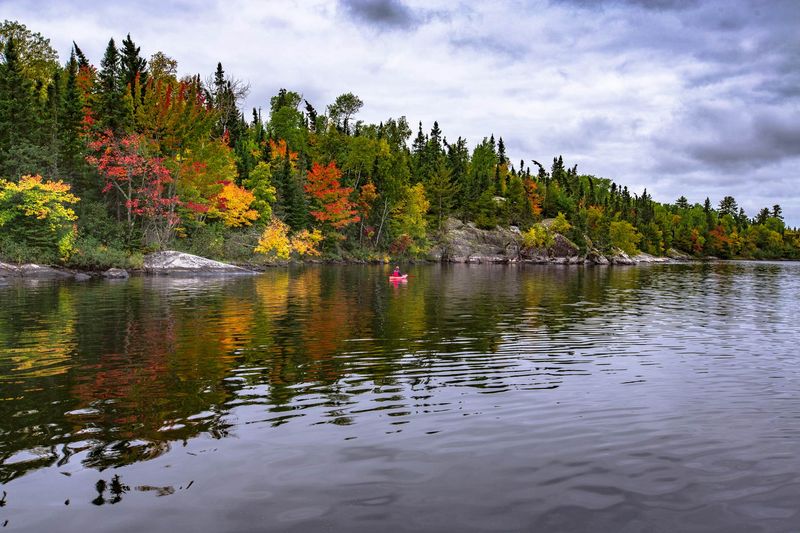
Water defines this northern Minnesota wilderness where lakes, rivers, and streams create a paddler’s paradise. Historic voyageur routes still guide modern canoeists through pristine waterways lined with ancient forests.
Houseboats provide unique accommodation options, allowing visitors to wake up surrounded by water and wilderness. The park’s dark skies offer exceptional opportunities for northern lights viewing during winter months.
Summer brings the haunting calls of loons echoing across misty lakes at dawn. Fishing for walleye, northern pike, and smallmouth bass provides dinner and adventure, while the park’s water-based camping creates an intimate connection with this aquatic wilderness.
11. Channel Islands National Park, California

Often called America’s Galapagos, these five islands off California’s coast harbor unique species found nowhere else on Earth. Island foxes, smaller than their mainland cousins, roam freely across these isolated landscapes.
Kayaking through sea caves reveals hidden grottos where seals and sea lions gather. The islands’ isolation has preserved pristine marine ecosystems perfect for snorkeling and diving adventures.
Spring brings spectacular wildflower displays as endemic plants bloom across coastal bluffs. Each island offers distinct experiences, from Anacapa’s lighthouse to Santa Cruz’s painted cave, creating multiple adventures within this island chain that feels like a different world entirely.
12. Lassen Volcanic National Park, California
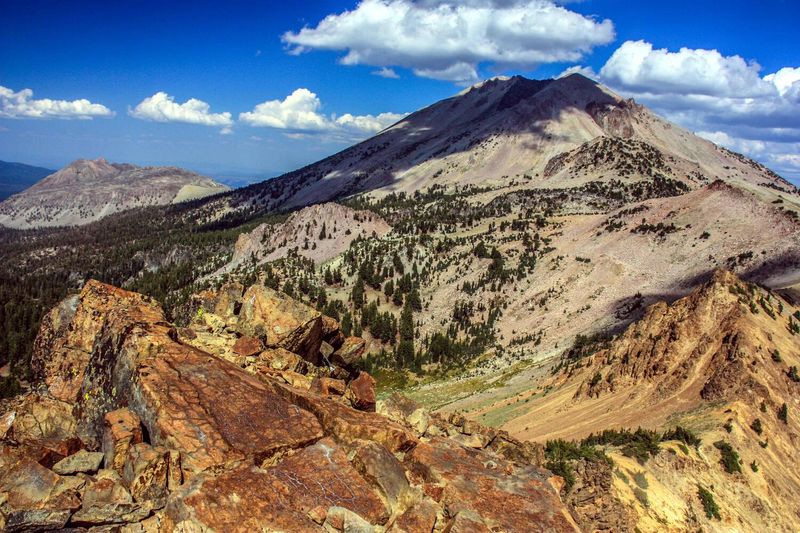
Active volcanism creates a living laboratory where mud pots bubble and steam vents hiss across the landscape. Lassen Peak, which last erupted in 1915, dominates the skyline as a reminder of the Earth’s power.
Bumpass Hell showcases geothermal features rivaling those in Yellowstone but without the crowds. The area’s boardwalks protect both visitors and fragile thermal features while providing close-up views.
Pristine alpine lakes reflect snow-capped peaks in summer, while winter transforms the park into a snowy wonderland perfect for cross-country skiing. The park’s elevation creates diverse ecosystems from volcanic badlands to lush meadows filled with wildflowers and wildlife.
13. Wind Cave National Park, South Dakota

Beneath South Dakota’s rolling prairie lies one of the world’s longest caves, featuring rare boxwork formations found in few places on Earth. These delicate calcite structures create intricate patterns resembling honeycomb.
Above ground, the park protects 33,000 acres of mixed-grass prairie where bison, elk, and prairie dogs thrive. This ecosystem once covered much of the Great Plains but now exists in only small remnants.
Cave tours reveal multiple levels of passages stretching over 150 miles underground. The cave’s unique barometric breathing creates winds that early explorers used to locate the entrance, giving the cave its name and creating a natural phenomenon still experienced today.
14. Hot Springs National Park, Arkansas

America’s oldest national park protects natural hot springs that have drawn visitors for thousands of years. Historic Bathhouse Row showcases elegant early 20th-century architecture where people once came seeking healing waters.
The springs maintain a constant 143°F temperature year-round, creating a unique urban national park experience. Hiking trails in the surrounding Ouachita Mountains provide scenic overlooks of the historic spa town below.
Today’s visitors can still experience the thermal waters at modern facilities while exploring the park’s cultural history. The combination of natural wonders and human heritage creates a unique national park experience where relaxation meets adventure in Arkansas’s mountain setting.
